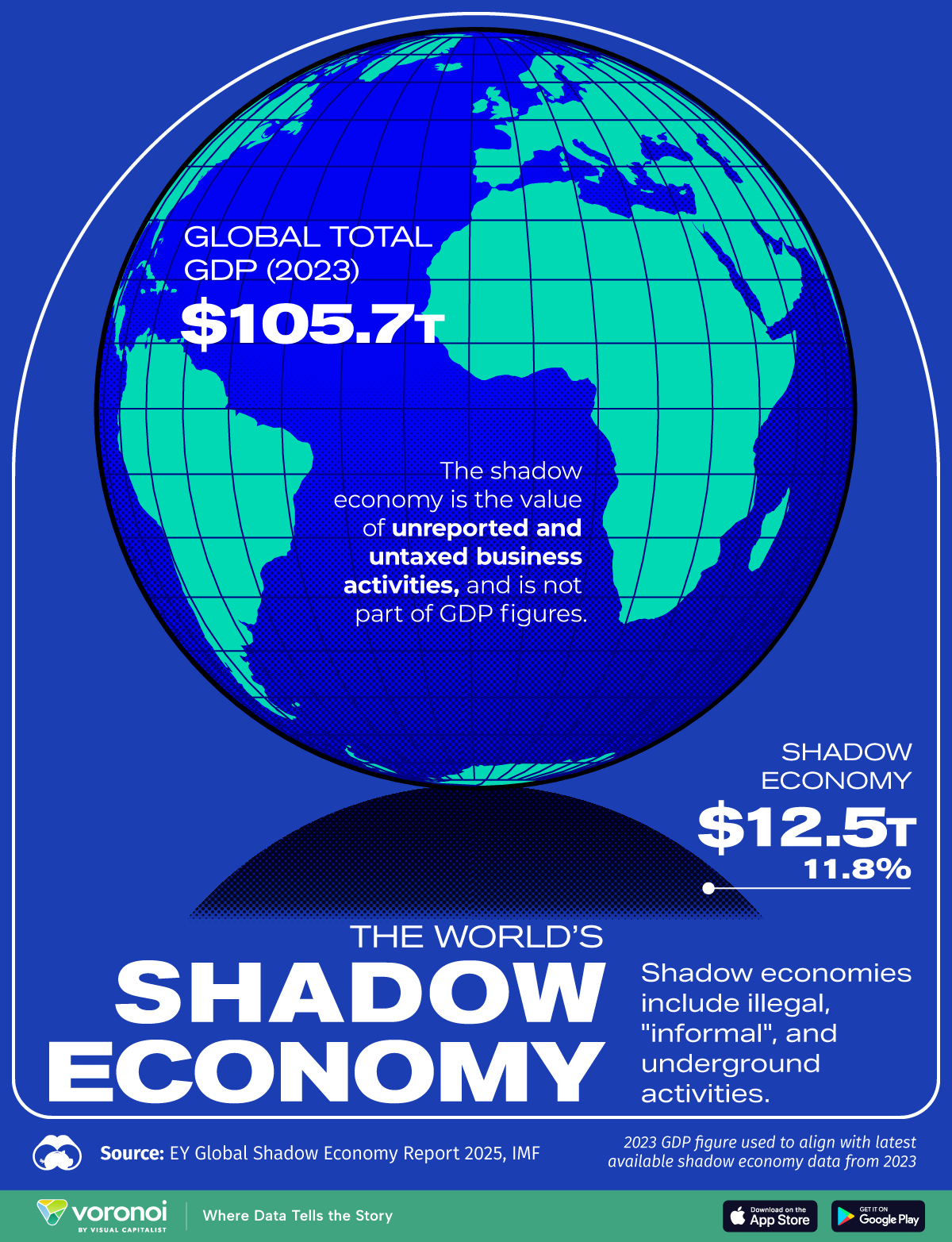Visualizing the World’s $12.5 Trillion Underground Economy
May 28, 2025
By Dorothy Neufeld
Graphics/Design: See this visualization first on the Voronoi app.

Use This Visualization
Continue watchingTop 5 Trending Basic Materials Stocks This Weekafter the ad
The video player is currently playing an ad. You can skip the ad in 5 sec with a mouse or keyboard
Visualizing the World’s $12.5 Trillion Underground EconomyThis was originally posted on our Voronoi app. Download the app for free on iOS or Android and discover incredible data-driven charts from a variety of trusted sources.
Key Takeaways- The value of the global shadow economy is estimated to equal 11.8% of GDP based on an analysis of 131 countries by Ernst & Young.
- In about half of the countries analyzed, the shadow economy is equal to 19% of GDP.
- Across 119 countries, the size of their shadow economy declined between 2000 and 2023, particularly in low-income countries.
Business activity that hides in the shadows generates trillions in revenue each year.
These unreported transactions are estimated to equal 11.8% of global GDP, or $12.5 trillion. Moreover, this is equal to Germany, Japan, and India’s economic output combined. While it is hard to measure, a key method is using a currency demand approach which analyzes patterns in cash use across countries.
This graphic shows the value of the world’s shadow economy, based on the EY Global Shadow Economy Report 2025.
What is the Shadow Economy?
For the analysis, the shadow economy includes illegal, “informal”, and underground activities.
This can include everything from street vendors to criminal enterprises that do not report to tax authorities. Overall, the value of the shadow economy represents the unreported and untaxed activities which are not included in official GDP figures.
The Size of the Underground Economy, by Region
Below, we show the estimated value of the underground economy as a share of GDP by region:
Region Shadow Economy % of GDP in 2023World11.8%|
| North America | 5.0% | | Europe (excluding Eastern Europe) | 6.6% | | Middle East | 8.2% | | Eastern Europe | 11.8% | | Western and Central Asia | 16.2% | | Southeast Asia and Pacific | 16.7% | | Central America and Caribbean | 17.5% | | South America | 20.0% | | Northern Africa | 24.1% | | Southern Africa | 25.9% | | Southern Asia | 27.2% | | Western Africa | 31.5% | | Middle Africa | 33.8% | | Eastern Africa | 41.6% | |
In North America, the shadow economy represents 5% of GDP—the lowest share globally.
Yet, when looking in terms of absolute value, the U.S. shadow economy is the second-highest in the world, worth approximately $1.4 trillion. Like North America, Europe (excluding Eastern Europe) and the Middle East have the smallest shares worldwide. In fact, the UAE stands near the bottom of the pack with an underground economy equal to 2.1% of GDP.
By comparison, Eastern Africa has the highest share overall, at 41.6% of GDP. Among the many factors influencing its widespread presence are corruption, weak institutional structures, and distrust in the political system.
Similarly, the shadow economy is significant in Southern Asia, where it employs more than 75% of the working population. In particular, Nepal and Pakistan have among the largest shadow economies as a percentage of GDP globally, at 51% and 35%, respectively. |





